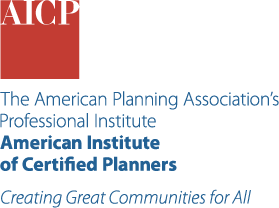Spotlight on Zoning Practice
Have You Cracked the Code on Effective Zoning Engagement?

Zoning has been in widespread usage for over 100 years. However, evidence suggests there are still widespread misunderstandings about the core ways in which zoning works. For example, a new law in North Carolina broadly defines and severely restricts various "down-zoning" actions, potentially (and perhaps unintentionally) making zoning unworkable across the state.
As Christian Neuschmidt, AICP, explains in the April issue of Zoning Practice, "Avoiding Pitfalls in Zoning Engagement," public participation around zoning changes is fundamentally different than participation in community visioning and comprehensive planning processes. While virtually any participant can offer meaningful input to shape a vision and broad policy goals, effective participation in zoning engagement requires a basic understanding of the intrinsic nature of zoning.
'The Public' Is Plural
One of the core challenges of zoning engagement, according to Neuschmidt, is balancing the needs of both the "involved public" and the "wider public." Members of the "involved public" want to understand how zoning works and how they can shape zoning decisions to advance specific policy objectives. This segment of the public often understands that zoning is a complex legal document, with different components that serve distinct purposes over varying timeframes. In contrast, members of the "wider public" are more narrowly interested in how zoning might affect them personally. When they learn about a potential zoning change, they are more likely to misinterpret specific provisions or take those provisions out of context.
Neuschmidt suggests several strategies planners can use to structure effective engagement events that can speak to both segments of the public. For example, planners can use an open-house format, with separate stations for each controversial element of a proposed zoning change, to create opportunities for impromptu brainstorming sessions.
Zoning Isn't a Plan
A common misconception among members of both the involved and the wider public is that zoning changes offer an opportunity to change direction on policy points enshrined in plans, says Neuschmidt. Zoning engagement processes are not the place to debate the merits of policy recommendations detailed in the local comprehensive plan or other relevant subarea or functional plans. Rather, the purpose of public engagement around zoning changes is to gather input on whether a particular proposed change will advance established policy objectives.
The challenge, of course, is that relatively few members of the wider public may have participated directly in previous plan-making processes. According to Neuschmidt, planners may be able to build continuity between planning and zoning efforts by extending special invitations to planning process participants to get involved in zoning changes intended to implement the plan.
Subscribe to Zoning Practice

Each issue of Zoning Practice provides practical guidance for planners and land-use attorneys engaged in drafting or administering local land-use and development regulations. An annual subscription to ZP includes access to the complete archive of previous issues.
Top image: Tinpixels / iStock / Getty Images Plus


